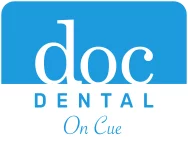CAD/CAM Dentistry – Kew, Melbourne, VIC
For patients who have missing or damaged teeth, the latest innovations in dental technology offer a new level of fast, high-quality dental restorations. Dental restoration is an umbrella term for the various types of tooth replacement, especially dental crowns (e.g. caps).
We have adopted CAD/CAM dental technology to bring these new treatment options to our clients. CAD stands for computer-aided design and CAM stands for computer-aided manufacturing.
Whenever we create a dental restoration for a patient, whether it’s a single crown or an entire bridge or denture, the first step is making a model of your mouth. Traditionally, this involved taking impressions by having you bite down on a pudding-like goop for several minutes. With CAD we use a digital 3-D scanner instead. The scanner is actually just a small handheld camera on a wand, which is moved back and forth and around your teeth to capture all sides.
What is CAD/CAM Dentistry?
The digital scan is instantly transmitted to a specialised computer program where a 3-D model of your teeth is automatically generated. Using tools built into the program, the dentist then sculpts a new virtual tooth (or teeth in the case of multiple-tooth restorations). By also scanning the opposing teeth, the dentist can model how the restoration will fit when your teeth come together. This encompasses the computer-aided design part of the procedure.
Next comes the computer-aided manufacturing. Once the design is complete, the dentist sends the file to an automated milling machine that’s located right in our office. The dentist will then choose a block of ceramic or porcelain (about 1-inch square) that matches the shade of your natural teeth. The block is placed in the milling machine and automated drills start carving into it, like an artist carving a sculpture out of marble, but much faster. The diamond drill bits cut the block into the shape of the tooth determined by the 3-D design.
Computer-Aided Manufacturing Improves Efficiency
CAD/CAM improves the efficiency, speed and especially the accuracy of many dental restoration procedures. With traditional ways of making a model of your mouth, using impressions, moulds and casting, there is the possibility of distortions occurring that make the model slightly inaccurate. When a dental crown is made on a slightly inaccurate model, there is higher chance that the fit of the crown will have to be adjusted a lot before it is comfortable. With CAD/CAM restorations, we get a perfect fit the vast majority of the time! With this technology, we can get your smile back to normal faster than ever and with beautiful results.
For a crown for a single tooth, the milling process takes about 10 minutes. The finished crown is then polished, sometimes glazed for colour or shine, and then baked in a small oven for 10 to 15 minutes. Thanks to computer-aided manufacturing, the entire crown fabrication process can take place while you’re relaxing in the dental chair, as opposed to in the past, where we’d have to send you home with a temporary crown and have you come back a day or a week later once a laboratory had completed the crown.
